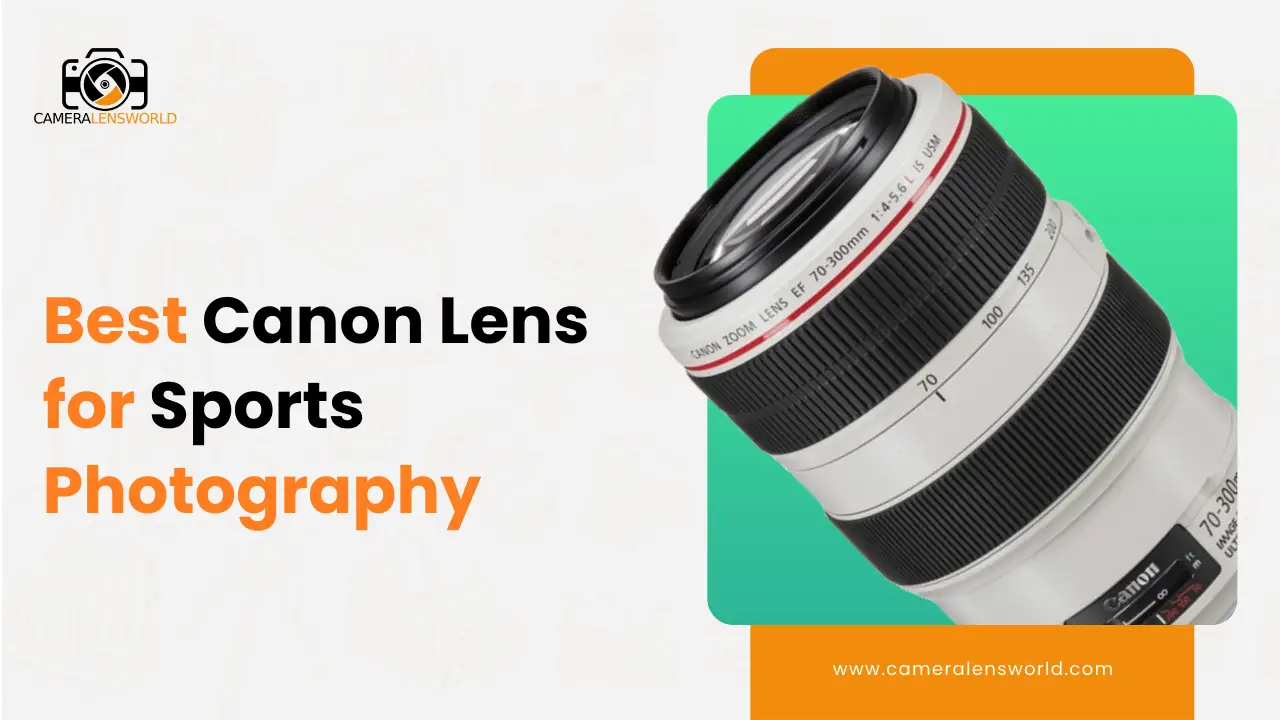
Sports and photography have always been my twin passions. Over the years, my quest to find the best camera lens for sports photography led me to explore various brands, and Canon stood out prominently.
I’ve had the privilege of attending numerous live sports events, capturing their sheer energy and intensity through my lens. After delving deeper into specific models, I was compelled to share my insights. Hence, this article is on the best Canon lens for sports photography.
Whether you’re a budding photographer or a seasoned pro, I hope this piece guides you to make an informed choice for your next sports shoot.
List of best Canon lens for sports photography [Quick list]
Quick list of best canon lens for sports photography.
- Canon RF 100-400mm F5.6-8 IS USM
- Canon RF 70-200mm F4L IS USM
- Canon RF 800mm F5.6L IS USM
- Canon EF 70-300mm
- Canon EF-S 55-250mm f/4-5.6
- Canon EF-S 18-200mm f/3.5-5.6 IS
- Canon EF-S 18-135mm f/3.5-5.6 IS
- Canon EF 100mm f/2.8 Macro USM
- Canon EF 70-300mm f/4-5.6L IS USM UD
List of best Canon lens for sports photography [Detailed analysis]
Detailed analysis of the best Canon lens for sports photography.
1. Canon RF 100-400mm F5.6-8 IS USM
- The Canon RF 100-400mm F5.6-8 IS USM is a variable aperture zoom lens with a maximum aperture range of F5.6 to F8, depending on the focal length you’re using.
- The lens is not weather-sealed.
- The RF 100-400mm produces good color and contrast and is typical of recent Canon glass, and lateral chromatic aberration is moderate to high throughout the focal range.
| Brand | Canon. |
| Type | Telephoto zoom lens. |
| Lens format coverage | Full frame. |
| Compatible Mounting | Canon RF. |
| Image Stabilization | The lens has optical image stabilization. |
| No.of diaphragm blades | 9 blades. |
| Lens construction | 12 elements in 9 groups. |
| Minimum focus distance | 880 mm. |
| Weight | 635 g. |
| Adjustment | Autofocus with Canon’s Nano USM is fast, smooth, and silent. |
Reasons to buy:
- Versatile zoom range for wildlife and sports photography.
- Image stabilization for steady shots.
- Good build quality and weather sealing.
- Compatible with Canon’s RF mount cameras.
Reasons to avoid:
- Price may be a barrier for some photographers.
- Heavier than some other telephoto zoom lenses.
2. Canon RF 70-200mm F4L IS USM
- The maximum aperture of this lens is F4 throughout its zoom range.
- The L-Series lens is of high quality, with weather-sealed construction, fluorine coatings for dust and water resistance, and heat-resistant paint for reflecting heat in hot situations.
- The lateral chromatic aberration may be observed.
| Brand | Canon. |
| Type | Telephoto zoom lens. |
| Lens format coverage | Full frame. |
| Compatible Mounting | Canon RF. |
| Image Stabilization | The lens has image stabilization. |
| No.of diaphragm blades | 9 blades. |
| Lens construction | 16 elements in 11 groups. |
| Minimum focus distance | 0.60 m. |
| Weight | 695 g. |
| Adjustment | Dual nano USM. |
Reasons to buy:
- The shortest (FF) 70-200mm lens ever.
- Excellent center sharpness.
- Autofocus that is quick and quiet.
Reasons to avoid:
- Teleconverters are incompatible.
- Expensive for an f/4 lens
- There is no tripod foot.
3. Canon RF 800mm F5.6L IS USM
- The maximum aperture of this lens is F4 throughout its zoom range.
- The is weather sealed.
- Ghosting and flare are reduced thanks to Super Spectra Coating (SSC) and Air Sphere Coating (ASC).
| Brand | Canon. |
| Type | Telephoto prime lens. |
| Lens format coverage | Full frame. |
| Compatible Mounting | Canon RF. |
| Image Stabilization | The lens has image stabilization. |
| No.of diaphragm blades | 9 blades. |
| Lens construction | 26 elements in 18 groups. |
| Minimum focus distance | 2.6 m. |
| Weight | 3140 g. |
| Adjustment | Autofocus. |
Reasons to buy:
- Excellent image stabilization for sharp shots at long distances.
- High-quality L-series optics for superior image quality.
- Dust and water-resistant construction.
- Suitable for wildlife, sports, and astrophotography.
Reasons to avoid:
- Limited versatility due to the fixed focal length.
- Heavy.
4. Canon EF 70-300mm
- The EF 70-300mm f/4-5.6 IS II USM has a variable maximum aperture of f/4-5.6; this means the maximum aperture changes as you zoom; at 70mm, it’s f/4, and at 300mm, it’s f/5.6.
- These lenses may be dust and moisture-resistant, but they are not intended for extreme weather situations.
- Chromatic aberration can occur to some extent.
| Brand | Canon. |
| Type | Telephoto lens. |
| Lens format coverage | Full frame. |
| Compatible Mounting | Canon EF-S. |
| Image Stabilization | The lens has optical image stabilization. |
| No.of diaphragm blades | 9 blades. |
| Lens construction | 16 elements in 11 groups. |
| Minimum focus distance | 0.6 m. |
| Weight | 695 g. |
| Adjustment | Autofocus with dual nano USM is fast, smooth, and quiet. |
Reasons to buy:
- Versatile zoom range.
- Relatively affordable.
- Image stabilization.
Reasons to avoid:
- It’s not the sharpest lens.
- Slower autofocus than high-end lenses.
5. Canon EF-S 55-250mm f/4-5.6
- The Canon EF-S 55-250mm f/4-5.6 lens has a variable maximum aperture.
- At the wide end (55mm), the maximum aperture is f/4, and at the telephoto end (250mm), the maximum aperture is f/5.6.
- This lens is not weather-sealed. It lacks environmental sealing.
- Throughout the zoom range, one UD lens element suppresses chromatic aberration, resulting in superb image quality with high resolution and contrast.
| Brand | Canon. |
| Type | Telephoto lens. |
| Lens format coverage | APS-C. |
| Compatible Mounting | Canon EF-S. |
| Image Stabilization | The lens has image stabilization. |
| No.of diaphragm blades | 7 blades. |
| Lens construction | 15 elements in 12 groups. |
| Minimum focus distance | 0.85 m. |
| Weight | 390 g. |
| Adjustment | The lens has autofocus (AF) and manual focus (MF) capabilities. |
Reasons to buy:
- Affordable.
- Image stabilization.
- Compact and lightweight.
- Good zoom range for its class.
- Decent image quality for the price.
Reasons to avoid:
- Plastic build.
- Not weather-sealed.
6. Canon EF-S 18-200mm f/3.5-5.6 IS
- This lens has a variable maximum aperture, which means the aperture changes as you zoom.
- At the wide end (18mm), the maximum aperture is f/3.5, and at the telephoto end (200mm), the maximum aperture is f/5.6.
- The lens is not weather-sealed.
- Chromatic aberration can be present.
| Brand | Canon. |
| Type | Zoom lens. |
| Lens format coverage | APS-C / DX. |
| Compatible Mounting | Canon EF-S. |
| Image Stabilization | The lens has image stabilization. |
| No.of diaphragm blades | 6 blades. |
| Lens construction | 16 elements in 12 groups. |
| Minimum focus distance | 0.45 m. |
| Weight | 595 g. |
| Adjustment | AF motor of the micromotor type with no full-time manual focusing. |
Reasons to buy:
- Sharp photos.
- Image stabilization is used.
- Excellent for wide-angle pictures in stadiums and fields.
- With a strong zoom grip.
Reasons to avoid:
- In low-light circumstances, it is difficult to utilize.
7. Canon EF-S 18-135mm f/3.5-5.6 IS
- Zooming changes the maximum aperture of this lens. The maximum aperture is f/3.5 at 18mm and f/5.6 at 135mm.
- The lens is not weather-sealed.
- Chromatic aberration is well-managed.
| Brand | Canon. |
| Type | Zoom lens. |
| Lens format coverage | APS-C / DX. |
| Compatible Mounting | CanonEF-S. |
| Image Stabilization | The lens has image stabilization. |
| No.of diaphragm blades | 6 blades. |
| Lens construction | 16 elements in 12 groups. |
| Minimum focus distance | 0.45 m. |
| Weight | 515 g. |
| Adjustment | Inner focusing system. |
Reasons to buy:
- Versatile zoom range.
- Image stabilization.
- Relatively compact for its range.
Reasons to avoid:
- Plastic build.
- Not weather-sealed.
- Limited to APS-C Canon DSLRs.
8. Canon EF 100mm f/2.8 Macro USM
- The maximum aperture of this lens is f/2.8.
- As a member of the prestigious L-series, this lens is dust and moisture-resistant, making it ideal for working in harsh situations.
- It is known for its good optical quality and effective control of chromatic aberration.
| Brand | Canon. |
| Type | Telephoto lens. |
| Lens format coverage | Full frame. |
| Compatible Mounting | Canon EF. |
| Image Stabilization | No image stabilization. |
| No.of diaphragm blades | 8 blades. |
| Lens construction | 15 elements in 12 groups. |
| Minimum focus distance | 31 cm. |
| Weight | 600 g. |
| Adjustment | The ultrasonic monitor has an excellent autofocusing speed at all distances and a full-time manual focus. |
Reasons to buy:
- Excellent sharpness.
- USM for faster autofocus.
- Full-frame compatible.
Reasons to avoid:
- No image stabilization (though the L version has it).
- Not weather-sealed.
9. Canon EF 70-300mm f/4-5.6L IS USM UD
- Zooming changes the maximum aperture of this lens. The maximum aperture is f/4 at 70mm and f/5.6 at 300mm.
- This lens is designed to be weather-sealed, protecting against dust and moisture.
- Canon’s L-series lenses, including the EF 70-300mm f/4-5.6L IS USM UD, are known for their optical quality and effective control of chromatic aberration.
| Brand | Canon. |
| Type | Zoom lens. |
| Lens format coverage | Full frame and APS-C DSLR. |
| Compatible Mounting | Canon EF. |
| Image Stabilization | The lens has image stabilization. |
| No.of diaphragm blades | 8 blades. |
| Lens construction | 19 elements in 4 groups. |
| Minimum focus distance | 1.2 m. |
| Weight | 1050 g. |
| Adjustment | EF stands for “electronic focus,” meaning the lens contains an autofocus motor. |
Reasons to buy:
- Good image quality.
- Versatile focal range.
- Image stabilization.
- High-quality build.
- Fast autofocus.
Reasons to avoid:
- Variable aperture.
- Size and weight.
What to look for in the best Canon lens for sports photography
1- Focal Length
When seeking the best Canon lens for sports photography, understanding how to evaluate focal length is key. Firstly, check the lens specifications: it’ll have numbers like “70-200mm,” indicating its range. If you’re often close to the action, a 70-200mm is versatile. For distant shots, like from stadium stands, opt for longer focal lengths, such as 300-400mm.
A prime lens, with a fixed focal length, might give sharper images but limits zooming flexibility. To best decide, consider the sports you photograph most. For instance, field sports might demand longer zooms, while indoor games might benefit from shorter, faster lenses. Always test lenses in real conditions when possible.
2- Fast autofocus
Fast autofocus is crucial when capturing dynamic sports moments. To determine if a Canon lens offers rapid autofocus for sports photography, start by checking its specifications for terms like “USM” (Ultrasonic Motor) or “STM” (Stepping Motor), which signify quick and quiet focusing.
Additionally, delve into user reviews and expert opinions to gauge the lens’s autofocus capabilities. If you can, test the lens personally in a store, focusing on moving subjects. Also, remember that lenses work in tandem with cameras so that more autofocus points can improve tracking. Lastly, ensure your chosen lens is fully compatible with your camera to maximize autofocus efficiency.
3- Image Stabilization
Image stabilization (IS) is a key feature in the best Canon lens for sports photography, helping to counteract camera shake, especially during handheld shots or in low-light situations. To ensure a Canon lens has effective IS for sports photography, look for the “IS” label in its name or description.
Canon offers varied IS modes, so it’s essential to find one that supports panning stabilizing in one direction, which is beneficial for tracking fast-moving subjects. Delving into user reviews can provide insights into its real-world performance.
If possible, a hands-on test at a store, observing the steadiness in the viewfinder at full zoom, can be revealing. Additionally, consider how the lens’s IS works with any in-body stabilization your camera might offer.
4- Aperture
For the best Canon lens for sports photography, the aperture is pivotal in influencing light intake and depth of field. When searching for the best Canon lens for sports, it’s essential to focus on its maximum aperture. Lenses with larger apertures, represented by lower f-numbers like f/2.8 or f/1.8, are preferable as they allow more light, facilitating faster shutter speeds to capture rapid movements.
Moreover, zoom lenses that maintain a constant aperture throughout their zoom range, for instance, remaining at f/2.8, are especially valuable because they ensure consistent brightness, even when fully zoomed. To gauge real-world performance, delve into reviews and, if feasible, conduct a hands-on test to observe its capabilities in varied lighting conditions.
Best canon lens for sports photography FAQs
What type of lens is useful for sports activity?
Wide-Angle and Telephoto Lenses
Even from the sidelines or throng, a long telephoto lens, like 300mm, will help you get close-up images. The 16mm wide-angle lens in your kit can be handy for other reasons.
What is the best setting for sports photography on a Canon camera?
To capture as much light as possible when shooting sports indoors or at night, I set my exposure manually with my aperture wide open (usually f/2.8). I maintain my shutter speed set to the speed at which I intend to stop the action, usually 1/1600th sec.
Is 400mm enough for sports?
The 400mm f/2.8 fast-aperture lens is a classic sports photography lens with excellent optical quality and the ideal angle of view for popular sports.
Should I use auto ISO for sports photography?
But it’ll just keep going up and down till it reaches 5000 ISO when it has to. However, most of the time, it tries to keep close to 1000. When shooting sports, using auto iso is the simplest approach for producing decent shots.
Conclusion
In a nutshell, it is crucial to have the best sports lens that can make all the difference. The best Canon lens for sports photography combines speed, versatility, and image quality. However, the right lens also depends on your specific needs and preferences.
If you’re new to sports photography, consider starting with our beginner’s guide for buying camera lenses to help you navigate the choices and find the lens that suits your style and budget as you embark on your exciting photography journey.
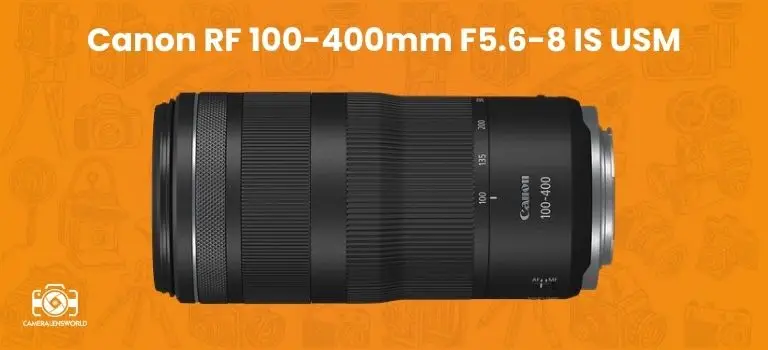

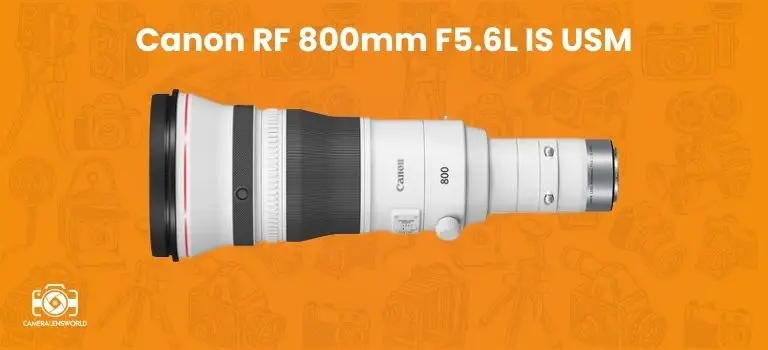
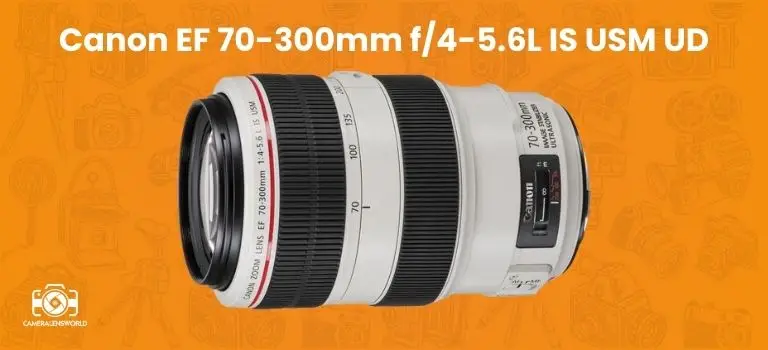
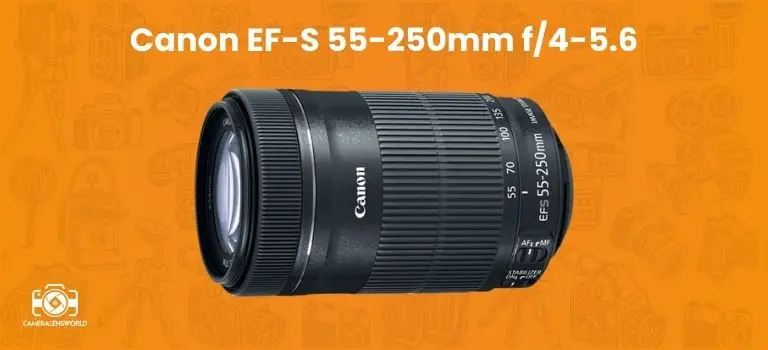
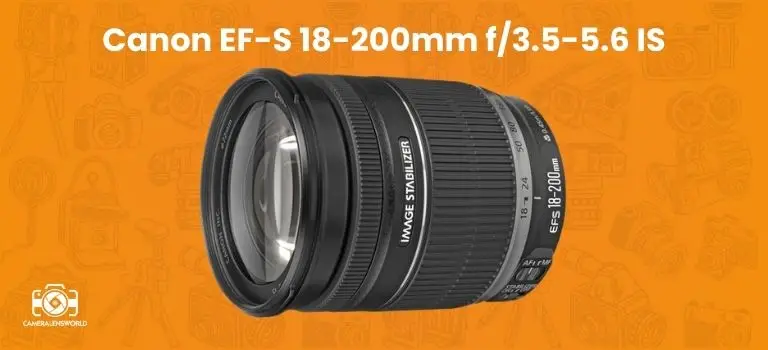

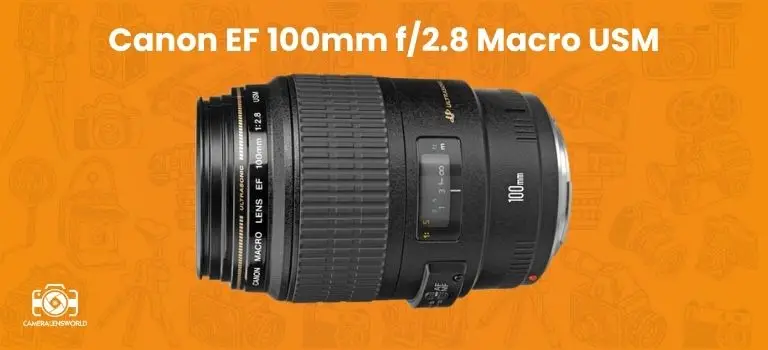
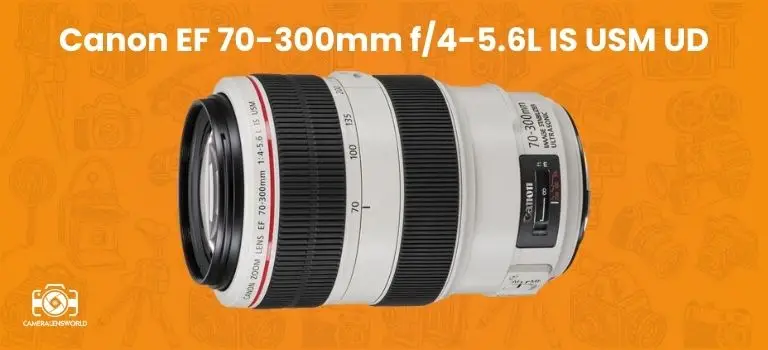

Leave a Reply
You must be logged in to post a comment.